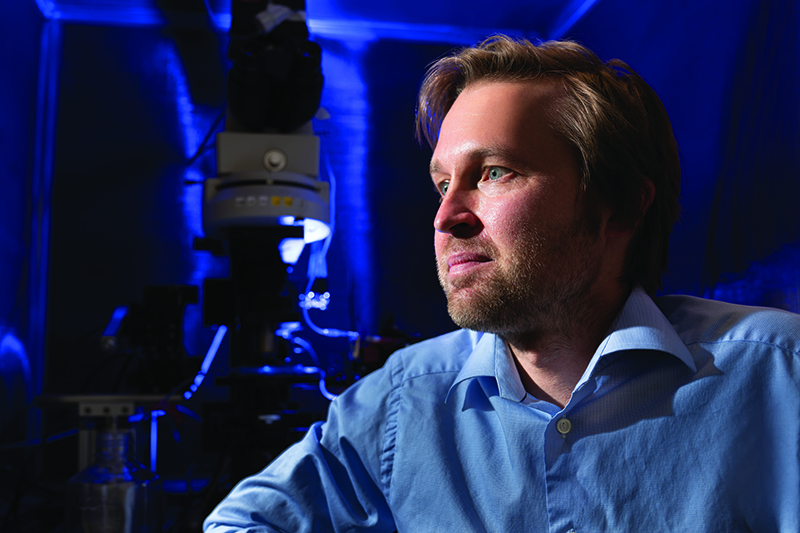The National Institutes of Health awarded Frans Vinberg, PhD, his first Research Project Grant.

There are millions of them in our eye’s retina—special photoreceptor cells known as rods and cones that allow us to perceive a wide range of light intensities and colors.
Backed by a new five-year, $2 million National Eye Institute Research Project Grant, the lab of Frans Vinberg, PhD, at the John A. Moran Eye Center is seeking a deeper understanding of photoreceptors and how major blinding diseases, including age-related macular degeneration (AMD) and diabetic retinopathy, affect them.
"There is a critical need to better understand the biology of the photoreceptors in the human retina and macula in health and disease," said Vinberg, who joined the Moran Eye Center in 2017. "This is particularly true of cone photoreceptors, compared to rods that have been more extensively studied."
Cones are concentrated in the macula, the small but significant area in the center of the light sensitive retina. Cones give us color vision and help us see fine details.
Rods, which aid good vision in low light, concentrate in the outer areas of the retina and give us peripheral vision. The human retina has about 100 million rods and 5 million cones.
Vinberg’s research is unique because it will rely on donated human tissue accessed via collaborations with U.S. eye banks and organ donor societies.
Important past research into light and dark adaptation in the retina has used animal models lacking a macula.
"Very little is known about photoreceptor mechanisms in the human macula," he continued. "The long-term goals of our project will seek to change this. We want to generate new knowledge about healthy eyes and explore macular dystrophies to identify potential targets for new therapies that could improve vision or prevent vision loss in aging or diseased human eyes."
In related research, Vinberg’s lab in 2020 collaborated in a groundbreaking study related to photoreceptors that provided insight on how people with retinal degenerative disease can maintain their night vision for a relatively long period.